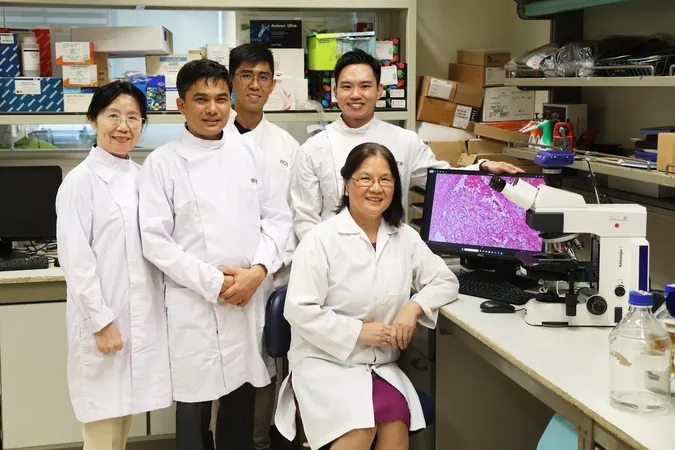
Warning! Bat Virus Just One Mutation Away from Jumping to Humans!
2025-06-13
Author: Arjun
A Hidden Threat in Our Midst
In a groundbreaking study spotlighted in *Nature Communications*, researchers are raising alarms about a group of coronaviruses called merbecoviruses. While most of these viruses appear harmless to humans, one particular subgroup -- known as HKU5 -- shows alarming potential for mutation.
What Makes HKU5 So Concerning?
Led by virologist Michael Letko from Washington State University's College of Veterinary Medicine, the research reveals that HKU5 might be just one mutation away from being able to infect humans. Despite being largely overlooked, this study shines a light on the need for vigilant monitoring of these viruses.
Exploring the Virus World
For over two decades, scientists have been cataloging thousands of wild animal viruses, but understanding their threat to humans has often lagged. Letko’s lab aims to bridge this knowledge gap, focusing particularly on lesser-known coronaviruses.
The MERS Connection
Merbecoviruses, which include the notorious MERS-CoV -- a virus transmitted from camels to humans that has a staggering 34% mortality rate -- are now in the spotlight. While the risks from most merbecoviruses seem low, HKU5 might be a different story.
Spike Proteins and Human Concerns
Like their coronavirus cousins, HKU5 viruses use a spike protein to latch onto host cells. In lab tests, it was discovered that HKU5 can bind to the ACE2 receptor, the same entry point exploited by the COVID-19 virus, SARS-CoV-2. Currently, HKU5 primarily binds to the ACE2 receptor found in bats, but mutations might allow it to adapt to humans.
A Mutation That Raises Eyebrows
Researchers have identified certain mutations in HKU5's spike protein that could enhance its ability to infect other species, including humans. In fact, an HKU5 strain in China has already made the leap to minks, indicating its readiness to cross species barriers.
Why We Should Care
Letko warns, "These viruses are closely related to MERS, so we have to stay vigilant. Even if there's no evidence of an outbreak in humans yet, the potential is there, making them worthy of our attention." AI has also played a crucial role in this research, with postdoctoral researcher Victoria Jefferson using revolutionary tools like AlphaFold 3 to model virus behavior in minutes—a feat that once took months.
Future Implications of the Study
The findings not only highlight the need for ongoing research into HKU5 and similar viruses but may also pave the way for the development of vaccines and treatments. Funded by the National Institutes of Health, this study is a clarion call urging scientists to keep a wary eye on these mysterious infectors.



 Brasil (PT)
Brasil (PT)
 Canada (EN)
Canada (EN)
 Chile (ES)
Chile (ES)
 Česko (CS)
Česko (CS)
 대한민국 (KO)
대한민국 (KO)
 España (ES)
España (ES)
 France (FR)
France (FR)
 Hong Kong (EN)
Hong Kong (EN)
 Italia (IT)
Italia (IT)
 日本 (JA)
日本 (JA)
 Magyarország (HU)
Magyarország (HU)
 Norge (NO)
Norge (NO)
 Polska (PL)
Polska (PL)
 Schweiz (DE)
Schweiz (DE)
 Singapore (EN)
Singapore (EN)
 Sverige (SV)
Sverige (SV)
 Suomi (FI)
Suomi (FI)
 Türkiye (TR)
Türkiye (TR)
 الإمارات العربية المتحدة (AR)
الإمارات العربية المتحدة (AR)